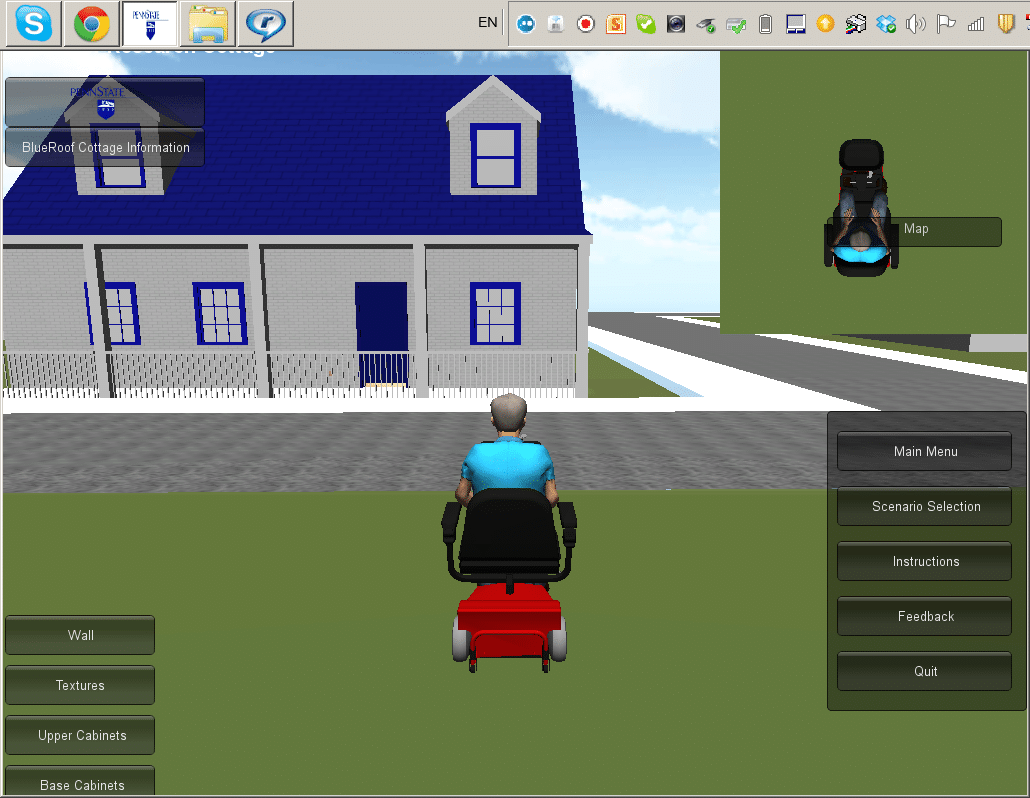University Park, PA. On Tuesday, May 3, 2011 at 10a.m. Penn State’s Department of Architectural Engineering and its Smart Spaces Center for Adaptive Aging in Community celebrated progress made in a coordinated effort to reduce the cost of housing for Pennsylvania’s elderly and disabled residents today and in the future. The celebration took place at […]
John Messner
John Messner at the Immersive Construction Lab
http://www.engr.psu.edu/ae/faculty/messner/ John I. Messner, Ph.D. Associate Professor of Architectural Engineering The Pennsylvania State University 104 Engineering Unit A University Park, PA 16802 United States of America [email protected] Educational Background: 1994 Ph.D., Architectural Engineering, Construction Management Option, The Pennsylvania State University 1991 B.A.E., Architectural Engineering, Construction Management Option, The Pennsylvania State University Construction Industry […]
Sonali Kumar, virtual reality modeller and designer
Sonali Kumar created this 3-D model of the Blueroof Cottage using AutoDesk’s Revit virtual reality imaging tool a Unity gaming engine. See Unity’s 3-D website: http://unity3d.com/create-games/?gclid=CPnkpYKZnK0CFVCR7QodWnKPnw. As the authoritative Wikipedia notes: ” A game engine is a system designed for the creation and development of video games. There are many game engines that are designed to […]
Special 3-D Construction Session to Reduce Health Care Costs and Improve Quality, PARF Conference
University Park, PA – On Thursday, September 22, at 9:30 a.m. Penn State’s Department of Architectural Engineering hosted a session entitled “Using Virtual Reality to Construct/Remodel Health Care Facilities & Independent Housing” in the Alumni Suite at the Nittany Lion Inn. [Listen to the entire session at the end of this posting.] The session is part […]
Aging Baby Boomers Like Me Need Housing: Think of this as an eccentric table of contents
Naturally, I begin with myself. The primary theme of my website is based on a scholarly body of literature known as experienced-based design which for the layperson, such as myself, means that I should have a role in the design of the world I live in. 1. For an attempt at a coherent presentation of […]
Won’t ride ‘em cowboy: This is my final column
Note: The following is the text of my February, 2011 column at Voices where I announce the end of my From Where I Sit column. The hard copy text, complete with a photograph of me, is available at newsstands in Centre County. I am reproducing it here for two reasons. First a reader insisted that […]


